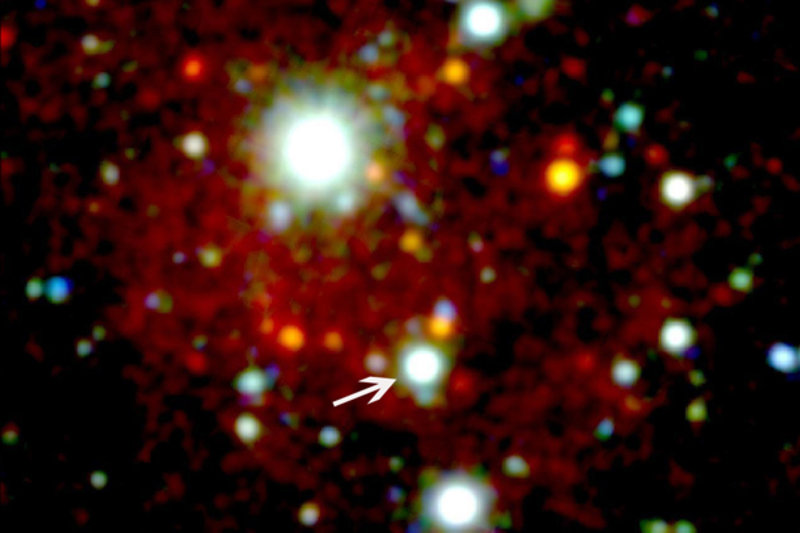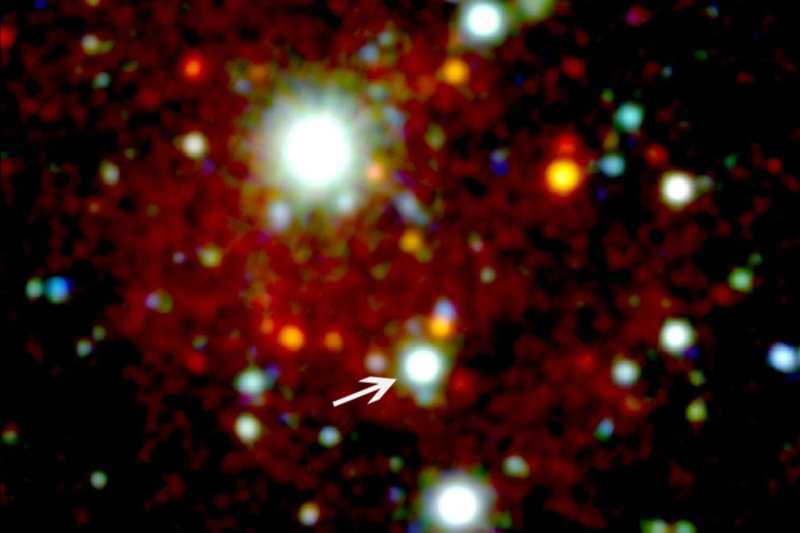A Mighty Duo
The discovery of the stellar black hole with the greatest mass to date and its companion star baffles astrophysicists
Astronomers have discovered the most massive stellar black hole to date in a neighbouring galaxy of the Milky Way. The object, designated as M33 X-7, is nearly 16 times the sun’s mass and part of a binary system. Researchers of the Max Planck Institute for Extraterrestrial Physics were significantly involved in "weighing" the black hole. (Nature, October 18, 2007)

Black holes announce the death of a massive star. When such a gas balloon exhausts its hydrogen fuel, it can no longer create any energy. Within seconds, the core of the star collapses under its own weight, while its temperature rises. With the core of the star collapsing in upon itself, a shock wave is generated that speeds outward and sweeps away the outer gas layers. The star flares up as a supernova. What is left is an extremely dense and massive stellar corpse; whose gravitational pull is so strong that even light cannot escape it: a black hole.
Such black holes are frequently part of a binary stellar system: together with another star they orbit around a common centre of gravity. The object M33 X-7 in the galaxy M33, about 3 million light years from Earth, in the constellation Triangulum, has such a companion sun. It orbits around the "monster" mass every three and half days, eclipsing its X-ray emissions. The black hole is located in the centre of a so-called accretion disc, in which gas matter swirls around like water running down the plug hole of a bathtub. As it heats up in the process, it radiates in x-ray wavelengths.
"Based on the length of the eclipse of the x-ray source and the scale of the companion’s star motion as inferred from observations, we were able to make precise calculations of the masses of the two components of the binary star system," explains Wolfgang Pietsch from the Max Planck Institute for Extraterrestrial Physics in Garching, near Munich. The astronomers based their observations on data gleaned by NASA's Chandra X-Ray Observatory as well as the Gemini telescope on Mauna Kea in Hawaii. What they discovered in terms of the two cosmic partners’ respective masses took them by surprise: the black hole has 15.7 times the mass of our sun, and its companion star is even 70 times heavier than the Sun. This is the mightiest pairing of a black hole and a star that researchers have come across. And they are quite stumped for explanations.
Close companions
It is in fact quite difficult to explain this mighty duo by using conventional models for the evolution of massive stars. For example, the progenitor of the black hole must have had an even greater mass than its companion as well as an enormous radius. Due to their relative proximity the stars should have originally touched upon each other: they would have shared a common outer atmosphere. While systems in which both partners share a common envelope are known, they usually entail an enormous loss of mass for the stars.
Why should one of the cosmic gas balloons have contained so much substance that it could leave a black hole of 16 sun masses behind? Researchers suspect that the progenitor star has lost considerably less mass than theory predicts. Nevertheless, the system remains puzzling. How, so goes one of the questions, did the binary star system survive the enormous supernova explosion? In any case, the object M 33 X-7 will keep the astronomers occupied for some time: "Because of its properties, this black hole is an wonderful test-bed for studying astrophysics", said Pietsch.
